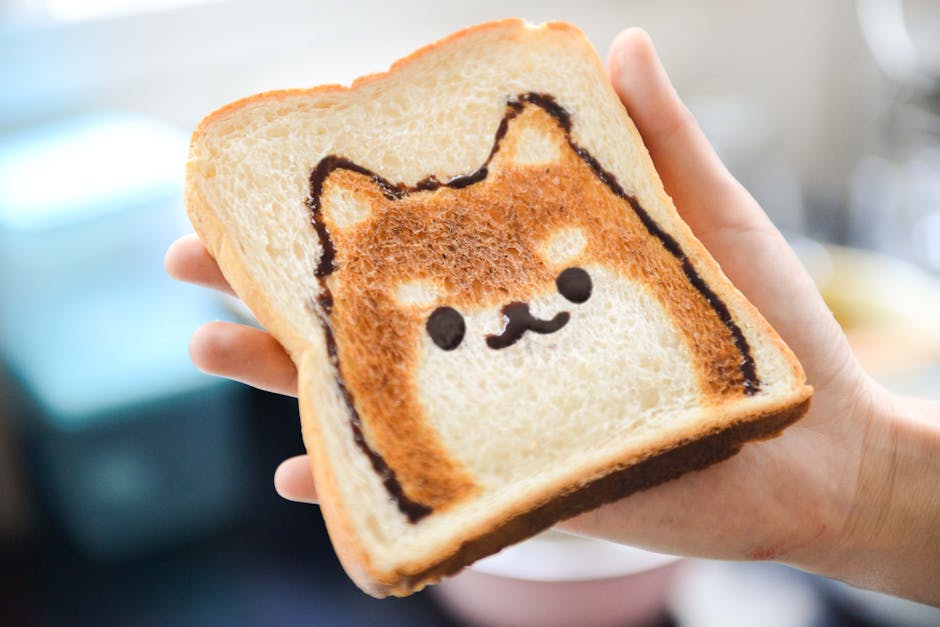Japanese Listening Practice With A Story #5: Conveyor Belt Sushi (Beginner Level 1)
![Japanese Listening Practice With A Story #5 | Conveyor Belt Sushi [Beginner Level 1] Japanese Listening Practice With A Story #5 | Conveyor Belt Sushi [Beginner Level 1]](https://images.pexels.com/photos/6253345/pexels-photo-6253345.jpeg?auto=compress&cs=tinysrgb&h=650&w=940)
Japanese Listening Practice With A Story #5: Conveyor Belt Sushi (Beginner Level 1)
Konnichiwa, style-savvy friends! I'm so thrilled you're back for another adventure in Japanese listening comprehension. Today, we're diving headfirst into a world of revolving deliciousness: Kaitenzushi, or conveyor belt sushi! This isn't just about learning the language; it's about experiencing a slice of Japanese culture, a feast for the senses, and a delightful example of practical beauty woven into everyday life. So, grab your chopsticks (imaginary ones are perfectly fine for now!), settle in, and let's embark on this tasty linguistic journey!
Why conveyor belt sushi? Well, beyond being utterly delicious and a quintessential Japanese experience, it's also a fantastic setting for language learning. The interactions are simple, the vocabulary is focused on food and basic requests, and the sheer novelty of watching your meal circle around you provides a memorable and engaging context. It's beginner-friendly but still culturally rich, making it the perfect recipe for an enjoyable and effective learning experience.
Our Story: A Sushi Adventure Begins!

Today, we'll listen to a short story about a character named Hana-chan who is visiting a kaitenzushi restaurant for the first time. Hana-chan is a young student, just starting her Japanese language studies. She's a bit nervous, but also incredibly excited to try all the different types of sushi. As you listen, pay attention to the words and phrases related to food, ordering, and basic greetings. Don't worry if you don't understand everything – the goal is to get a feel for the language and pick up key vocabulary. We'll break it all down later!
Important Note: This story is designed for beginner level 1 learners. The vocabulary and grammar are kept simple, and the pacing is relatively slow. Even if you have some prior knowledge, revisiting the basics is always a good idea!
Before we begin, let's review some essential vocabulary:
- いらっしゃいませ (Irasshaimase): Welcome! (A standard greeting used in shops and restaurants)
- 一人 (Hitori): One person
- 二人 (Futari): Two people
- すみません (Sumimasen): Excuse me / I'm sorry
- これ (Kore): This
- ください (Kudasai): Please (when ordering)
- おいしい (Oishii): Delicious
- ありがとう (Arigato): Thank you
- お会計 (Okaikei): The bill / Check, please
- まぐろ (Maguro): Tuna
- サーモン (Salmon): Salmon
- えび (Ebi): Shrimp
- いくら (Ikura): Salmon roe
- お茶 (Ocha): Green tea
Now, get ready to listen! (Imagine a sound file is embedded here)
(Audio File: A short, simple dialogue between Hana-chan and a restaurant staff member, as described above. Here's a written approximation of what the audio file would contain):
Staff: いらっしゃいませ!何名様ですか?(Irasshaimase! Nanmei-sama desu ka?) - Welcome! How many people?
Hana-chan: 一人です。(Hitori desu.) - One person.
Staff: こちらへどうぞ。(Kochira e douzo.) - This way, please.
(Sound of Hana-chan sitting down)
Hana-chan: (Looking at the conveyor belt) うわあ、すごい!(Uwaa, sugoi!) - Wow, amazing!
Hana-chan: すみません、お茶ください。(Sumimasen, ocha kudasai.) - Excuse me, green tea, please.
Staff: はい、どうぞ。(Hai, douzo.) - Yes, here you go.
Hana-chan: (Pointing at a plate of salmon) これください。(Kore kudasai.) - This one, please.
Hana-chan: (After eating) おいしい!(Oishii!) - Delicious!
Hana-chan: お会計お願いします。(Okaikei onegaishimasu.) - The bill, please.
Staff: ありがとうございます。(Arigatou gozaimasu.) - Thank you.
Breaking Down the Dialogue: Understanding the Japanese Beauty

Okay, now that you've listened to the story, let's dissect it and appreciate the elegant simplicity of the Japanese language at play. We'll focus on not just the literal translations, but also the nuances and cultural context behind each phrase.
1. いらっしゃいませ!(Irasshaimase!)
This is the quintessential welcome greeting you'll hear in almost every shop and restaurant in Japan. It literally translates to "Welcome!", but it carries a deeper sense of hospitality and attentiveness. It's like saying, "We're honored to have you here and will do our best to make your experience enjoyable." Notice how the intonation rises slightly at the end, adding a touch of warmth.
2. 何名様ですか?(Nanmei-sama desu ka?)
This politely asks, "How many people are in your party?" The use of sama is an honorific suffix, adding a layer of respect to the question. You might also hear a simpler version: 何人ですか?(Nannin desu ka?), but Nanmei-sama desu ka? is more common in formal settings like restaurants.
3. 一人です。(Hitori desu.)
This simply means "One person." The particle desu is a polite copula, similar to "is" in English. It adds a touch of formality to the statement. You could also say just "Hitori," but adding desu is more polite, especially when interacting with staff.
4. こちらへどうぞ。(Kochira e douzo.)
This is a polite way of saying "This way, please." Kochira means "this way," and douzo means "please" or "go ahead." The phrase is often accompanied by a gesture, guiding you to your seat.
5. うわあ、すごい!(Uwaa, sugoi!)
This is an exclamation expressing surprise and excitement. Uwaa is a general exclamation of wonder, and sugoi means "amazing," "great," or "incredible." This phrase captures Hana-chan's initial awe at seeing the conveyor belt sushi for the first time. It perfectly conveys the feeling of encountering something new and exciting.
6. すみません、お茶ください。(Sumimasen, ocha kudasai.)
This is a useful phrase for ordering something. Sumimasen means "Excuse me" or "I'm sorry," but it's often used to get someone's attention. Ocha means "green tea," and kudasai means "please" (give me). So, the phrase translates to "Excuse me, green tea, please." The o before cha is another honorific prefix, adding politeness to the request. It's like saying, "Excuse me, may I please have some green tea?"
7. はい、どうぞ。(Hai, douzo.)
This is a polite response meaning "Yes, here you go." Hai means "yes," and douzo means "please" or "go ahead." It's a common phrase used when offering something to someone.
8. これください。(Kore kudasai.)
This is another essential phrase for ordering. Kore means "this," and kudasai means "please" (give me). So, the phrase translates to "This one, please." You would point at the sushi you want while saying this phrase. It's simple, direct, and perfectly effective!
9. おいしい!(Oishii!)
This simply means "Delicious!" It's a crucial phrase for expressing your enjoyment of the food. Don't be shy about saying it! Japanese chefs appreciate hearing that their food is being enjoyed. The drawn-out pronunciation (Oishiiii!) adds even more emphasis.
10. お会計お願いします。(Okaikei onegaishimasu.)
This is how you ask for the bill. Okaikei means "the bill" or "the check," and onegaishimasu means "please." So, the phrase translates to "The bill, please." Again, the o before kaikei is an honorific prefix, adding politeness. It's more polite than simply saying "Kaikei kudasai."
11. ありがとうございます。(Arigatou gozaimasu.)
This is a polite way of saying "Thank you." Arigatou means "thank you," and gozaimasu is a polite auxiliary verb. It's more formal than just saying "Arigatou." This is the standard way to express gratitude in many situations.
Practice Makes Perfect: Reinforcing Your Learning

Now that we've broken down the dialogue, let's put your knowledge to the test with some practice exercises!
A. Repetition: Listen to the audio file again and repeat each phrase after the speaker. Focus on pronunciation and intonation. Try to mimic the sound of a native speaker as closely as possible.
B. Role-Playing: Imagine you are Hana-chan. Practice ordering food, asking for the bill, and expressing your enjoyment of the meal. Try to use the phrases you've learned in different variations.
C. Vocabulary Flashcards: Create flashcards with the vocabulary words we learned earlier. Practice memorizing the words and their meanings. You can use online flashcard tools or create your own physical flashcards.
D. Substitution Drills: Replace the sushi names in the dialogue with other types of sushi you know. For example, instead of salmon (サーモン), try tuna (まぐろ) or shrimp (えび). This will help you expand your vocabulary and practice using the phrases in different contexts.
E. Real-Life Application: If you have access to a kaitenzushi restaurant, try ordering your meal using the Japanese phrases you've learned. Don't be afraid to make mistakes – it's all part of the learning process! Even ordering at a regular sushi restaurant and using the phrases with the server can be a great experience. Focus on small wins, like saying "Arigatou gozaimasu" when you receive your meal.
The Art of Kaitenzushi: More Than Just a Meal

Beyond the language, kaitenzushi is a fascinating example of Japanese ingenuity and a celebration of efficiency and beauty. The conveyor belt system itself is a testament to clever design, optimizing space and minimizing wait times. The presentation of the sushi, even on a revolving belt, is meticulously crafted. Each plate is carefully arranged, showcasing the vibrant colors and textures of the ingredients. It's a visual feast that elevates the dining experience.
The communal aspect of kaitenzushi is also noteworthy. It encourages interaction and a shared appreciation for food. Watching the variety of sushi pass by, you're tempted to try new things and explore different flavors. It's an adventure in every bite!
Think about how this concept applies to other areas of life. How can we incorporate elements of efficiency, beauty, and community into our own daily routines? Perhaps it's decluttering your workspace to optimize productivity, adding a touch of greenery to your home to create a more calming environment, or finding ways to connect with others through shared hobbies or interests. Japanese design principles often emphasize simplicity, functionality, and a deep connection with nature, and these principles can be applied in countless ways to enhance our lives.
Continuing Your Japanese Journey

Congratulations on completing another Japanese listening practice session! I hope you enjoyed our delicious dive into the world of kaitenzushi. Remember, language learning is a journey, not a destination. Keep practicing, keep exploring, and keep embracing the beauty and wonder of the Japanese language and culture.
Stay tuned for our next lesson, where we'll explore another fascinating aspect of Japanese life. In the meantime, ganbatte kudasai! (Do your best!)
And please, share your experiences! Have you been to a kaitenzushi restaurant? What are your favorite types of sushi? What other aspects of Japanese culture are you curious about? Let me know in the comments below!
Sayōnara for now, and until next time, may your days be filled with beauty and delicious discoveries!
Post a Comment